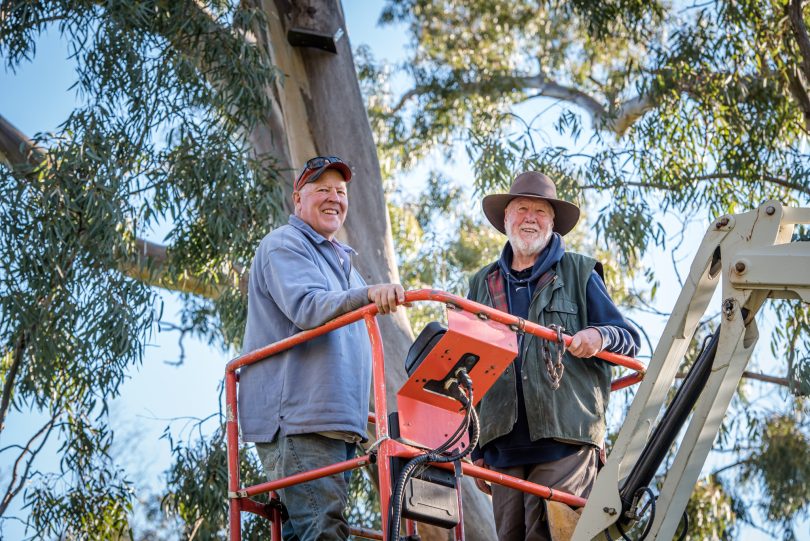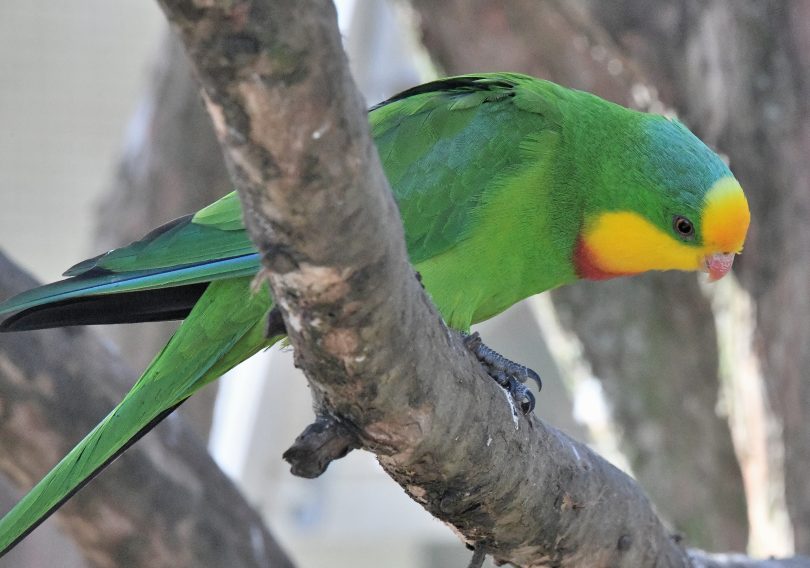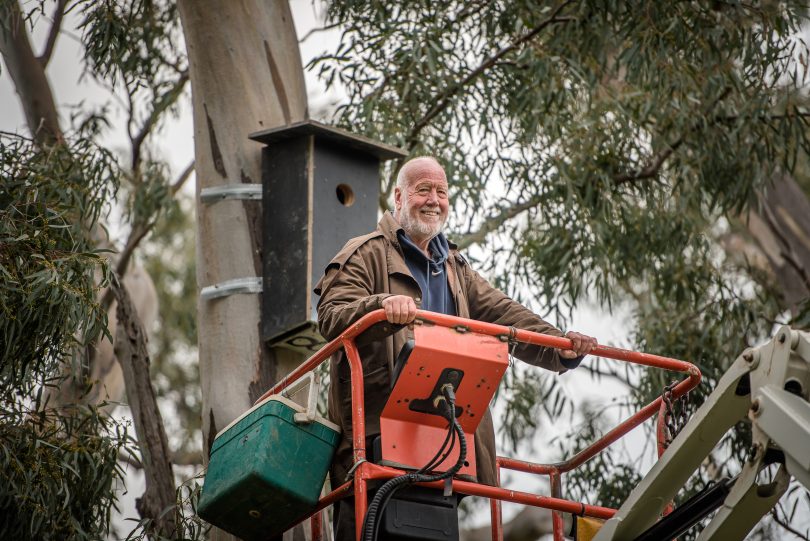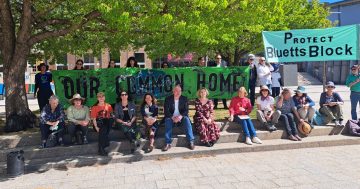
Brothers Ashley and Neil Hermes are trialling a new nesting box they hope will help Australia’s iconic suburb parrot flourish. Photo: Supplied.
Superb parrots are among Australia’s most exquisite and iconic birds, but they’re also among the rarest. Fewer than 10,000 are thought to remain in the wild.
Part of the issue is the parrot is extremely fussy about where it raises its young, which means it struggles to find a place to call home as suitable trees are removed.
The good news is anyone who lives in the NSW South West Slopes and the ACT is in with a very good chance of seeing a superb parrot in the wild as this is where the remaining population lives.
It’s also where Canberra-based ornithologist Neil Hermes and his brother, Ashley, who owns a farm at Bethungra, near Cootamundra, are experimenting with a nesting box they believe could be part of the answer to increasing the number of these beautiful birds.
“The problem has been that people have known superb parrots need hollows to nest in and have been putting up boxes to help, but the parrots haven’t been using the boxes and people have been very disappointed,” says Neil.
“We have used the research on superb parrots by Canberra scientist Dr Laura Rayner from the Australian National University to give us clues as to what might trigger the parrots to use nest boxes.”
Research by ANU shows the species likes hollows in large tree limbs that have deep chambers, wide entrances and enough space on the floor for a big family.
However, very few tree hollows – only 0.5 per cent – fit this criteria.

The superb parrot has come under threat from clearing and trapping during the past 100 years. Photo: Supplied.
Superb parrots also like to be high in trees to avoid predators, which meant Neil and Ashley had to borrow a cherry picker to place the boxes at a height of at least eight metres.
“This might not even be high enough so we may have to find machinery that can take us higher if the boxes aren’t successful this year,” says Neil.
“We’re experimenting with what we think will work, and while we can’t guarantee success this time, we’ll persevere until we find what does work.”
Nesting usually begins around September and there are superb parrots already living in trees on Ashley’s property.
However, the brothers are yet to see the birds using the nesting boxes that were installed a few weeks ago.

Neil Hermes places a nesting box eight metres high using a cherry picker. Photo: Supplied.
Ashley has been busy farming and Neil, who had hoped to keep a close eye on the nesting boxes, has been stuck in Canberra during COVID-19 lockdown.
“Even in their natural hollows, they might only go in and out two to three times per day, and they can be quite secretive about it,” says Neil. “So unless you’re very patient, you won’t actually see it happening.”
Research suggests superb parrots will return to the same hollow over several decades and nest in colonies if there are several suitable hollows close by.
While this is positive for landholders with superb parrots already on their properties, it can be devastating for superb parrots when their favourite hollow is chopped down.
“If a particular tree in an area is chopped down, they might not be able to move onto another tree nearby easily,” says Neil.
“And the chance of finding a colony is quite rare these days because it’s unlikely there will be more than one suitable hollow close to each other.”
While the brothers are using ANU’s research to inform their nesting box design, they are running the project independently – proof of their passion and enthusiasm for seeing the superb parrot thrive in the area.
However, they are sharing their learnings with ANU and other bird enthusiasts so more people can create suitable homes for the ever-fussy parrot.
Original Article published by Hannah Sparks on About Regional.














